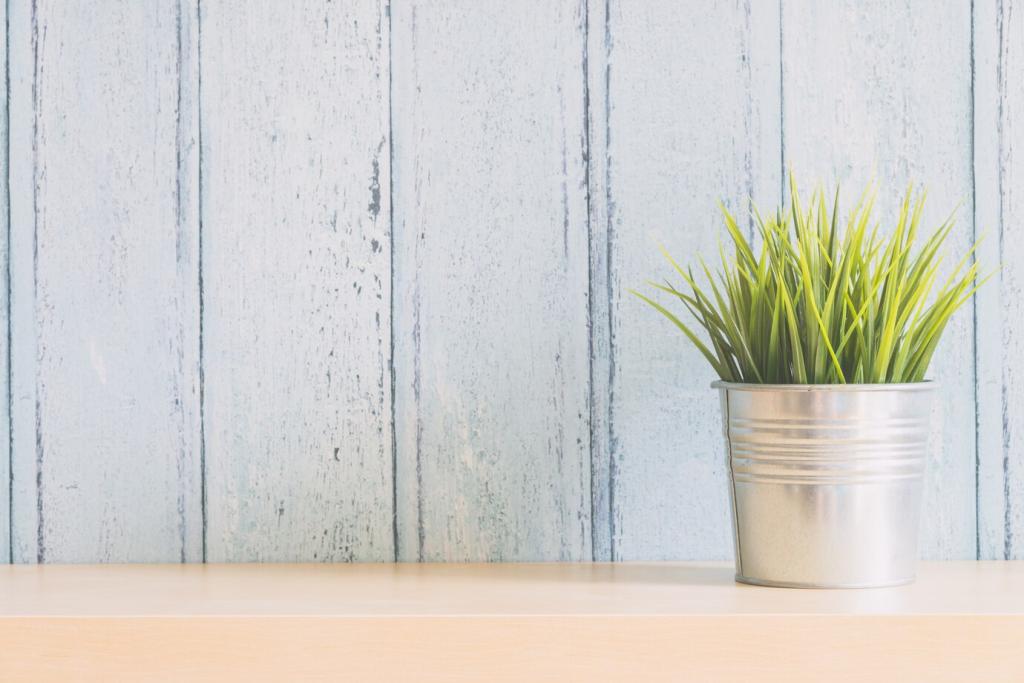Eco-Friendly Living: How Minimalism Promotes Sustainability
Embracing eco-friendly living has become an essential response to the environmental challenges our world faces today. Minimalism, with its focus on simplicity, intentionality, and conscious consumption, offers a powerful framework for promoting sustainability. This page explores the relationship between minimalism and eco-friendly living, showing how making mindful choices about what we use and consume can lead to a healthier planet and a more meaningful life. By understanding the core principles of minimalism and their impact on the environment, we can discover practical ways to live more sustainably and reduce our ecological footprint.

Reducing Consumption: The Minimalist Approach
Minimalism teaches us to pause and reflect before making any purchase, questioning the necessity and intended use of an item. This habit discourages impulse buying and excessive consumption, both of which contribute to resource depletion, pollution, and waste. When we buy less, we not only save money but also decrease the demand for new products, which in turn limits the extraction of raw materials, manufacturing emissions, and distribution-related carbon footprints. Over time, practicing mindful purchasing helps foster a deeper appreciation for the things we truly need, reducing clutter in our lives and lessening our overall strain on the environment.
Choosing quality over quantity is a core tenet of minimalism that has direct environmental advantages. When individuals opt for well-made, durable items instead of cheap, disposable alternatives, they contribute to a culture of longevity rather than disposability. High-quality goods are less likely to break or become obsolete quickly, meaning fewer products end up in landfills. This shift also supports ethical manufacturers who prioritize sustainable materials and fair labor practices. Ultimately, prioritizing quality instills a long-term mindset that values responsible production and consumption, aligning personal values with global sustainability goals.
Decluttering is more than just a trend; it is an actionable strategy embedded in minimalist living that supports environmental sustainability. Letting go of excess possessions helps individuals evaluate their real needs, discouraging wasteful habits and encouraging donating, recycling, or selling items instead of discarding them as trash. The decluttering process often inspires people to become more intentional about future acquisitions, recognizing that accumulating more items does not equate to greater happiness or fulfillment. By continually reassessing what we own and keeping only what is truly useful or meaningful, we significantly reduce our environmental impact over time.
Minimalism and Waste Reduction
Embracing Reusables
Minimalists frequently seek out products that can be reused countless times, such as water bottles, tote bags, and containers, as opposed to single-use alternatives. This habit not only reduces the amount of plastic and other materials ending up in landfills and oceans, but it also sets a precedent for making more sustainable choices in everyday life. The act of switching to reusables encourages people to be proactive about waste, inspiring others to follow suit and fostering a community-wide commitment to environmental stewardship. Over time, these individual efforts help create a collective impact that supports broader sustainable living goals.
Choosing Multi-Functional Products
Selecting items that serve multiple purposes is a hallmark of minimalist living and a smart strategy for minimizing waste. Multi-functional products reduce the need to own several single-use items, thereby saving resources and reducing household clutter. For example, a high-quality knife with multiple uses in the kitchen or clothing that can transition between various settings means fewer items are produced, purchased, and eventually discarded. By embracing versatility and thoughtfully considering each product’s usability, minimalists help to streamline consumption, extend the lifecycle of goods, and lower the overall waste generated by their households.
Limiting Packaging and Disposables
Minimalists are often drawn to products with minimal or eco-friendly packaging and avoid single-use, disposable items whenever possible. By supporting brands that use recyclable materials or offer package-free products, they help reduce demand for the wasteful packaging common in today’s consumer culture. Making choices such as shopping in bulk, bringing reusable containers, or selecting items with compostable or minimal wrapping all contribute to the reduction of packaging waste. This conscientious approach greatly lessens the volume of rubbish produced at home, ensuring less ends up in our landfills and waterways, and supporting a cleaner world for future generations.
Conscious Consumption and Resource Conservation
Aligning daily habits with the minimalist ethos often involves rethinking how energy is used at home and beyond. Minimalists commonly seek to eliminate unnecessary appliances and electronics, opting for energy-efficient models and unplugging devices when not in use. This vigilance about energy consumption extends to lifestyle choices, such as walking or cycling instead of driving and using public transport when available. By prioritizing simplicity and function, minimalist households can drastically reduce their carbon footprint, cut down utility bills, and demonstrate that a comfortable life need not rely on excess energy consumption.

